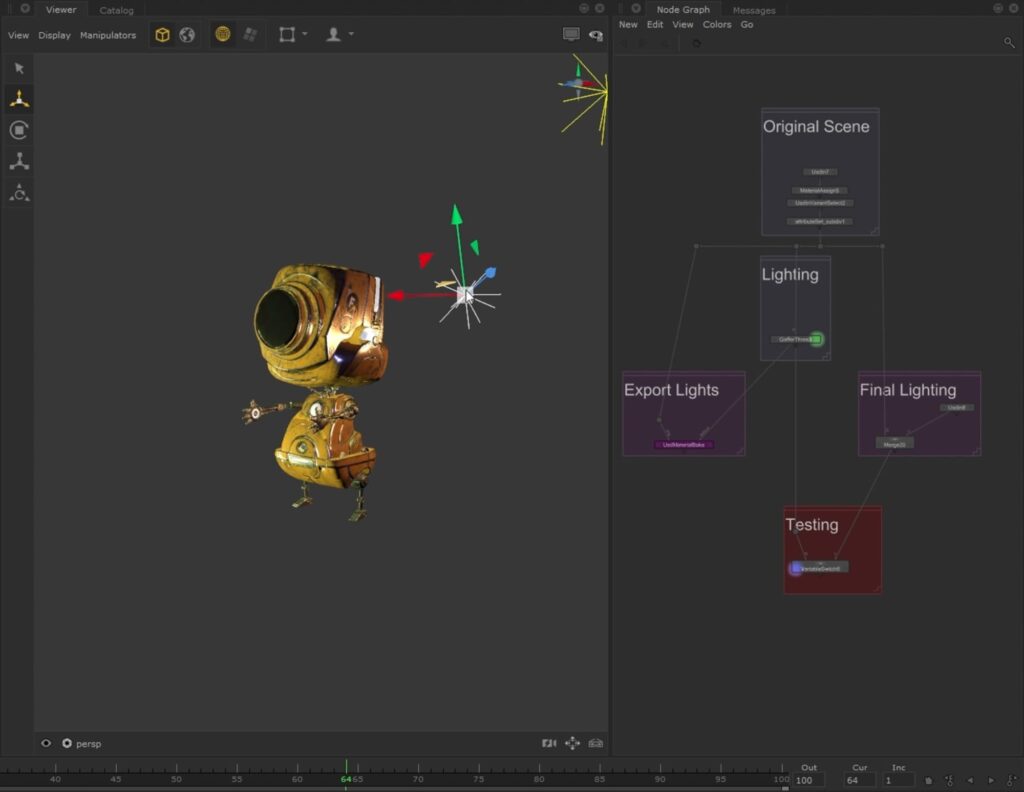Katana is a lookdev and lighting tool and as such it benefits from close integration with the applications it interfaces with most often, especially Mari for texturing and Nuke for compositing. With the new version 5 of the software, Foundry’s overarching goal is seeking to remove pipeline friction. Tight integration between Nuke and Katana is key to that goal. Katana 4.0 was released in October 2020 with Foresight, and now with the soon-to-be-released Katana 5.0, Foundry extends this with a fully rebuilt Foresight+. Together with a deeper adoption of USD, Katana is building industry-wide momentum. An ever-growing number of VFX and animation houses are acknowledging that this approach to lighting and lookdev is overwhelmingly powerful.
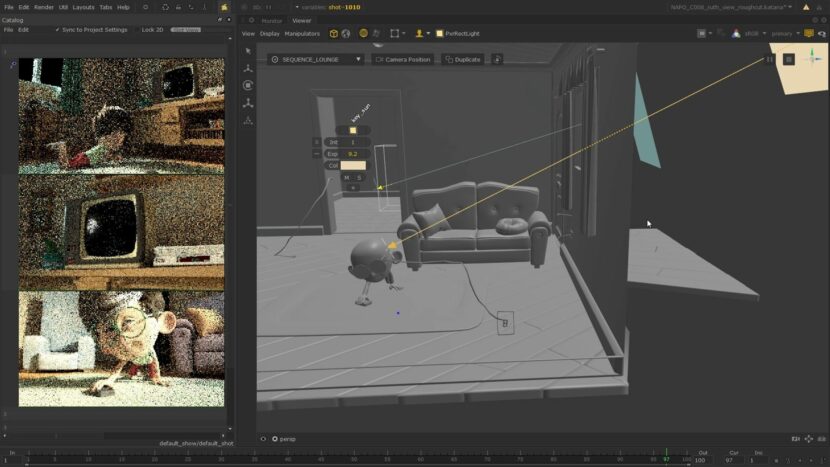
Foresight+
Foresight was introduced previously to Katana in version 4. It provides the ability to have multiple renders going at the same time as well as having these renders happen locally, on your in-house farm, or on the cloud. Foresight was aimed at preview rendering only, and it had limited live rendering functionality. Foresight+ is the newest extension to this in Katana 5.0 and it completely changes the way this works. In the new version instead of just communicating attribute changes, it now communicates changes to the Node Graph Ops, so when artists are working the rendered changes are accurate even with multiple renders happening in multiple locations all being done live. “Foresight+ is an almost complete rewrite of our Live Rendering system with the target of making it much more scalable and suitable for the Foresight system,” explained Gary Jones, Foundry’s Product Manager for Lighting. “On top of that, we introduced a new communication protocol to the system that enabled a more versatile, nuanced and battle-tested inter-process communication layer.”
The Foresight+ rendering feature, which is in Katana 5.0, takes simultaneous multiple rendering to a much greater level. Central to Foresight+ and the whole approach in version 5 is doing lighting and lookdev, where what you see on screen is what you actually get. “Users can simultaneously render multiple images across multiple shots, frames, assets, asset variations, and other tasks from within one Katana project file,” Jones explains. “Work with the added horsepower of networked machines for faster renders and scalable feedback, safe in the knowledge that you’re making all the right choices.”
But Foresight+ is also key in lighting across multiple shots within the scene and being able to update as lighting adjustments are made from the master lighting design. Being able to run multiple renders simultaneously of related shots aids in balancing and progressing lighting.
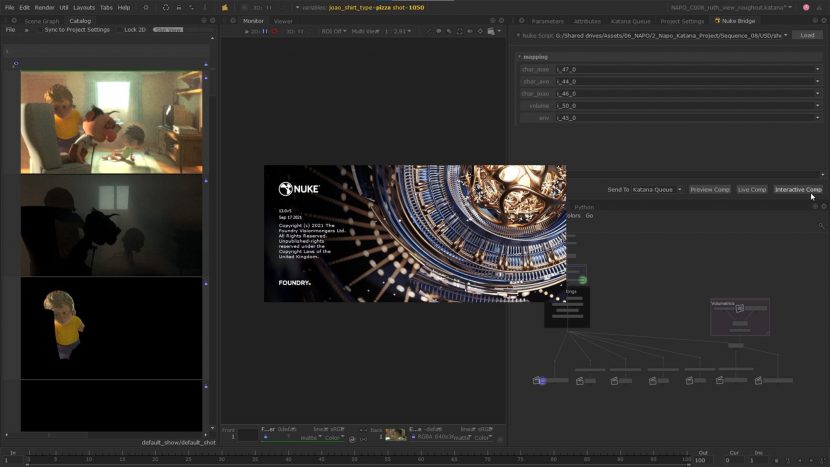
Katana and Nuke Bridge
For many users, tighter integration of Nuke and Katana is one of the most impressive features of the new workflow. It is wasteful to be hunting for visual solutions in both packages separately. What is needed is a true collaboration between Katana and Nuke. In reality, Nuke moved past being a 2D tool a long time ago. Many lighters work with their own Nuke comps, and similarly, Nuke Artists are highly fluent in 3D lighting. The new interoperability was previewed some time ago round-tripping pixels from Katana to Nuke and back, but in Katana 5.0 this goes much further. The earlier prototype has been replaced with the same infrastructure of Foresight+. This new integration is a killer app for selling and polishing VFX work. “We have had a really strong response from users who have seen this Katana -Nuke integration,” comments Jones. “Nuke artists are excited by the long-term possibilities of the collaboration as in the future they could gain the ability to push requests back into Katana when additional passes, AOVs, or scene changes are needed. Blurring the boundaries between the applications and departments.”
Many of the visuals that sell a shot in animation happen in the final Nuke comp, so being able to see these directly in Katana means 3D artists know accurately how their work will be used. VFX artists working with plate photography combined with rendered elements are similarly able to see the full comp environment with everything integrated but still able to be adjusted.
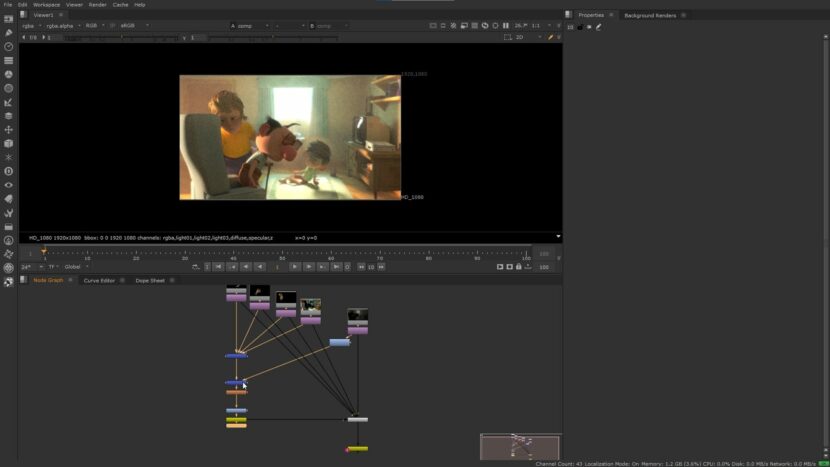
Katana no longer needs a full copy of Nuke open. Now you can work with a headless Nuke setup still streaming in and out of Nuke with additional color grades or effects being added to the base Katana lighting solutions. Single shots, multiple shots are all possible but so are multiple passes. “AOVs can be sent to Nuke and viewed through preview comps or live streaming,” comments Jones. “New Nuke nodes for Katana in and out have been made specifically for streaming between Katana and Nuke.”
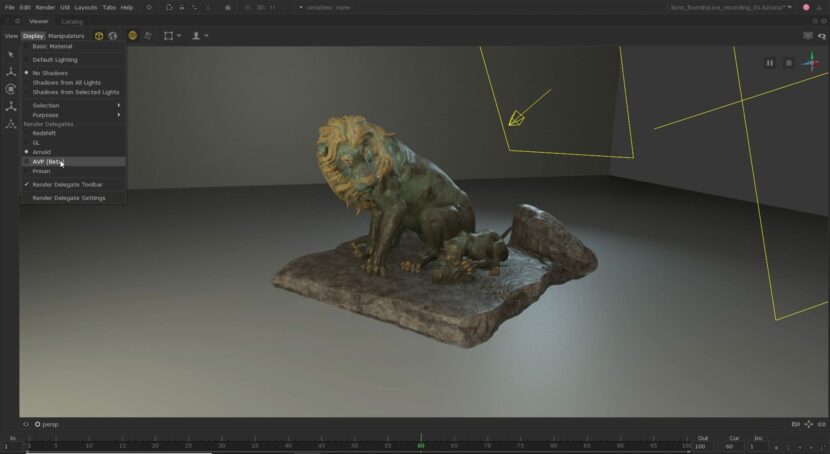
It is very easy to set up these multiple renders and also renders with multiple AOV utility passes. For a lighter, this means working on a more final version of their work interactively. An artist can render light passes for diffuse, specular, z-depth and passes for each light type, by using the light groups they set up in Katana. This all reduces the likelihood of full re-renders, but it also means there is a reduced need to render every conceivable AOV in the blind hope it might be needed later in comp. Tight integration with Nuke means the workflow of building templates for other shots or even sequences is greatly enhanced.
It was just a decade ago, Katana 1.0v1 was released to the world, (see our 2011 article) and the concept of node-based look development & lighting was extended to the wider VFX community. Nuke is a little older, but Nuke has just been awarded a 2021 HPA Award for Engineering Excellence, which will be awarded Nov. 18th in LA, and this new close Katana interoperability should accelerate its integrated use in animation even further.
Also in Katana 5.0
There is now more USD support and round-tripping with Mari and general USD improvements. At the moment USD is still a moving target throughout the industry but by embracing USD so seriously the Foundry is building on this evolving power of interoperability and connectiveness. For example, in addition to materials, USD lights can be exported and imported via the USD functionality. While it is not a universal approach, it is great to see the advances that are being made as the Foundry has a leadership role to play here.
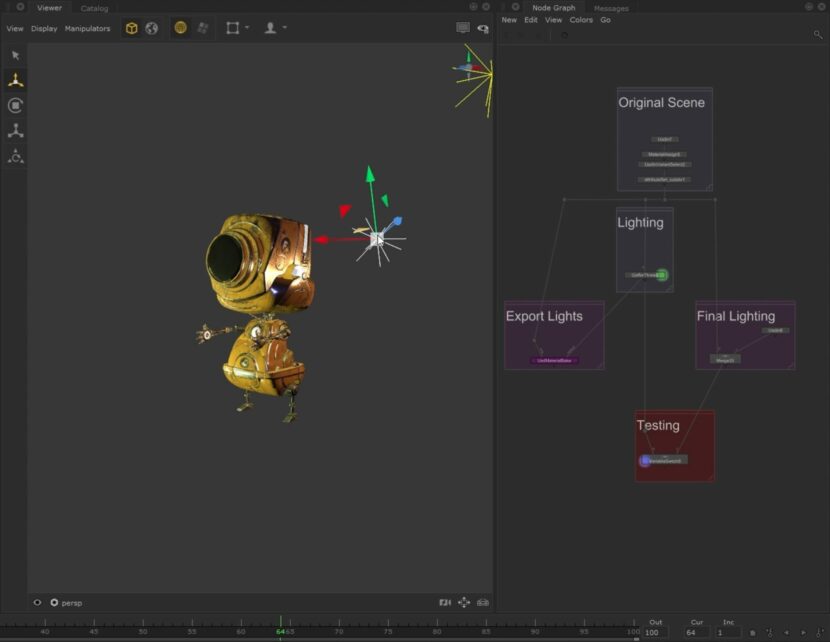
Hydra Viewport fully supports custom render delegates. Hydra Render Delegates are bridges between the Hydra viewport in Katana and a renderer. Render Delegates were created by Pixar as part of the Hydra renderer used in usdview. The Hydra Render Delegate system provides the ability to switch out the backend renderer for the viewport data in Hydra. As many renderers provide or will provide these, – this is really ‘plug and play’. The ‘Hd’ render delegates are really a framework that enables the communication between multiple scene graphs and multiple renderers. One of those Render Delegates is Foundry’s own AVP (Advanced ViewPort) as seen in Mari and Modo. AVP offers high-quality render previews in Katana, including ambient occlusion, reflection, transparency, etc, and really helps in placing lights and previewing materials. “As well as AVP, many of our render partners are looking to support Hydra inside Katana such as 3Delight, RenderMan, Arnold, & Redshift,” explains Jones. “The hydra viewport also supports a range of instancing tools. Without setting off a full render these can be previewed in the viewport.”
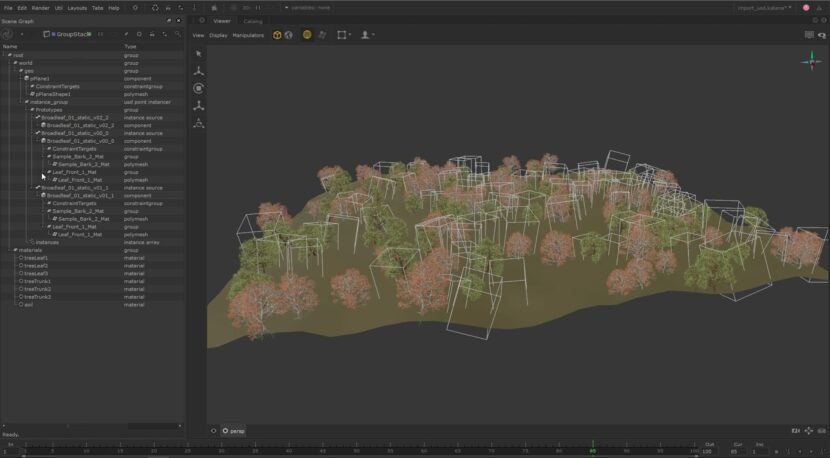
Foundry will be releasing Katana 5 soon, you can find out more about the release, and get updates directly via their special Katana 5 website.

